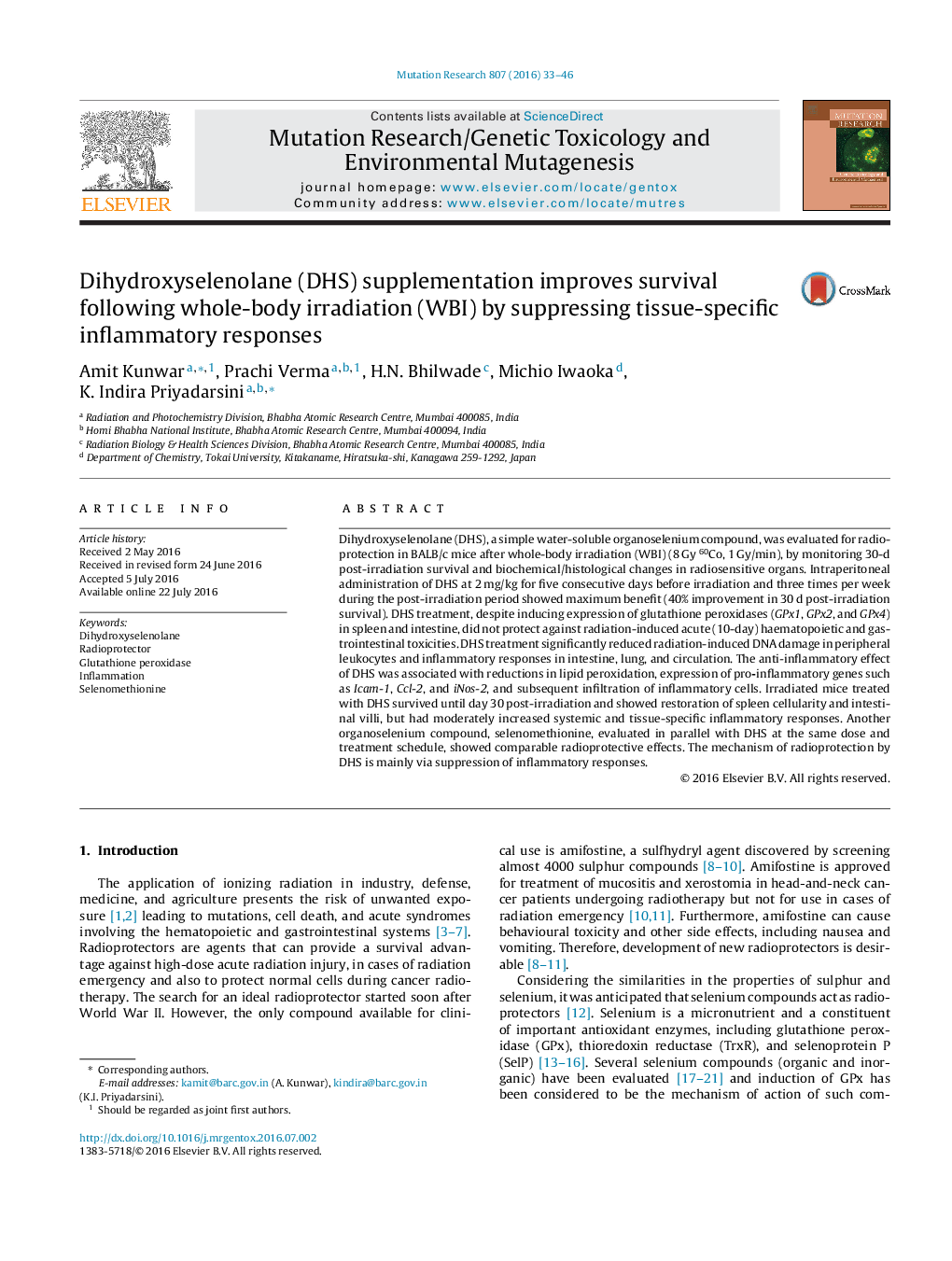| Article ID | Journal | Published Year | Pages | File Type |
|---|---|---|---|---|
| 2147816 | Mutation Research/Genetic Toxicology and Environmental Mutagenesis | 2016 | 14 Pages |
Abstract
•DHS treatment improved the 30 days survival of irradiated (WBI, 8Gy) mice by 40%.•DHS treatment led to tissue specific induction of GPx1, GPx2 and GPx4.•DHS treatment suppressed radiation induced inflammatory responses in lung and intestine.•The radioprotective effect of DHS was comparable with that of selenomethionine.
Dihydroxyselenolane (DHS), a simple water-soluble organoselenium compound, was evaluated for radioprotection in BALB/c mice after whole-body irradiation (WBI) (8 Gy 60Co, 1 Gy/min), by monitoring 30-d post-irradiation survival and biochemical/histological changes in radiosensitive organs. Intraperitoneal administration of DHS at 2 mg/kg for five consecutive days before irradiation an
Related Topics
Life Sciences
Biochemistry, Genetics and Molecular Biology
Cancer Research
Authors
Amit Kunwar, Prachi Verma, H.N. Bhilwade, Michio Iwaoka, K. Indira Priyadarsini,
